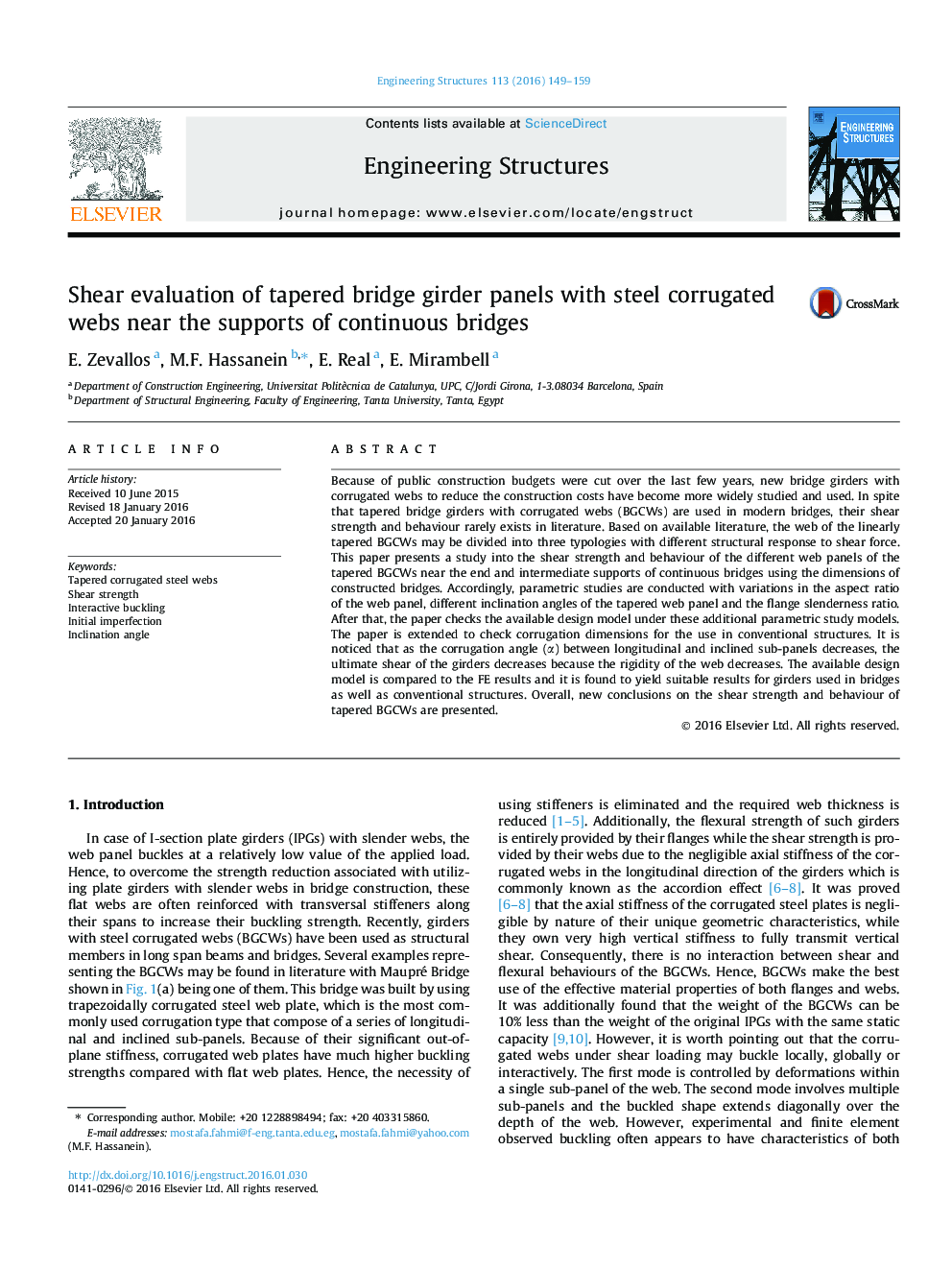| Article ID | Journal | Published Year | Pages | File Type |
|---|---|---|---|---|
| 6740115 | Engineering Structures | 2016 | 11 Pages |
Abstract
Because of public construction budgets were cut over the last few years, new bridge girders with corrugated webs to reduce the construction costs have become more widely studied and used. In spite that tapered bridge girders with corrugated webs (BGCWs) are used in modern bridges, their shear strength and behaviour rarely exists in literature. Based on available literature, the web of the linearly tapered BGCWs may be divided into three typologies with different structural response to shear force. This paper presents a study into the shear strength and behaviour of the different web panels of the tapered BGCWs near the end and intermediate supports of continuous bridges using the dimensions of constructed bridges. Accordingly, parametric studies are conducted with variations in the aspect ratio of the web panel, different inclination angles of the tapered web panel and the flange slenderness ratio. After that, the paper checks the available design model under these additional parametric study models. The paper is extended to check corrugation dimensions for the use in conventional structures. It is noticed that as the corrugation angle (α) between longitudinal and inclined sub-panels decreases, the ultimate shear of the girders decreases because the rigidity of the web decreases. The available design model is compared to the FE results and it is found to yield suitable results for girders used in bridges as well as conventional structures. Overall, new conclusions on the shear strength and behaviour of tapered BGCWs are presented.
Related Topics
Physical Sciences and Engineering
Earth and Planetary Sciences
Geotechnical Engineering and Engineering Geology
Authors
E. Zevallos, M.F. Hassanein, E. Real, E. Mirambell,
